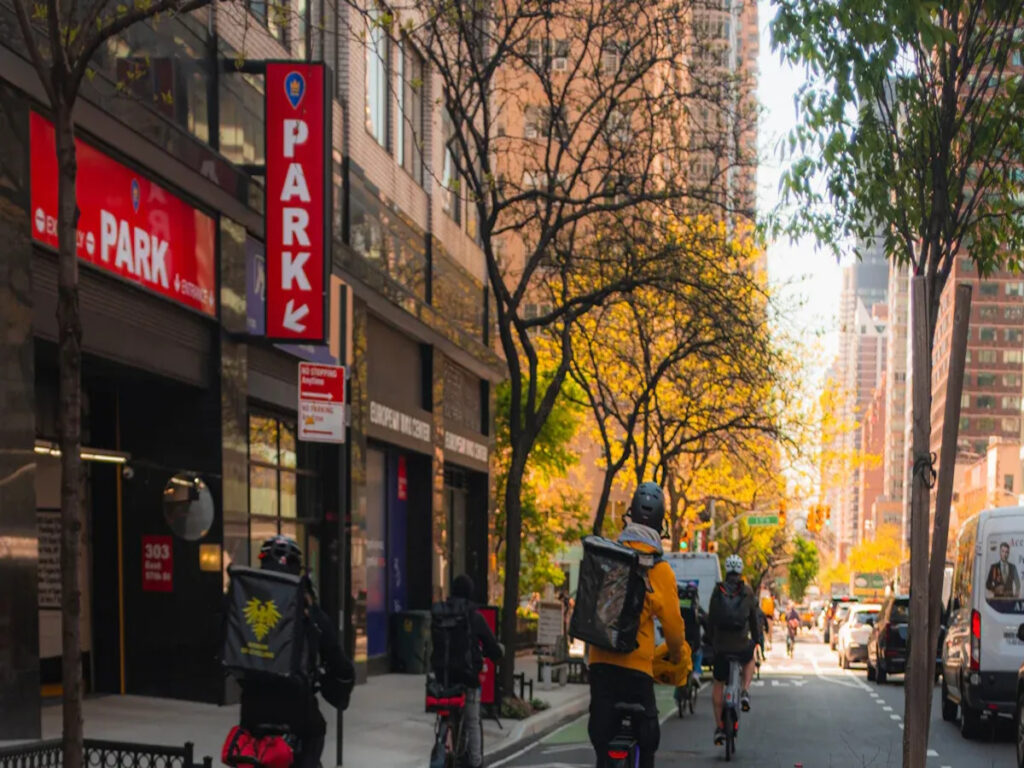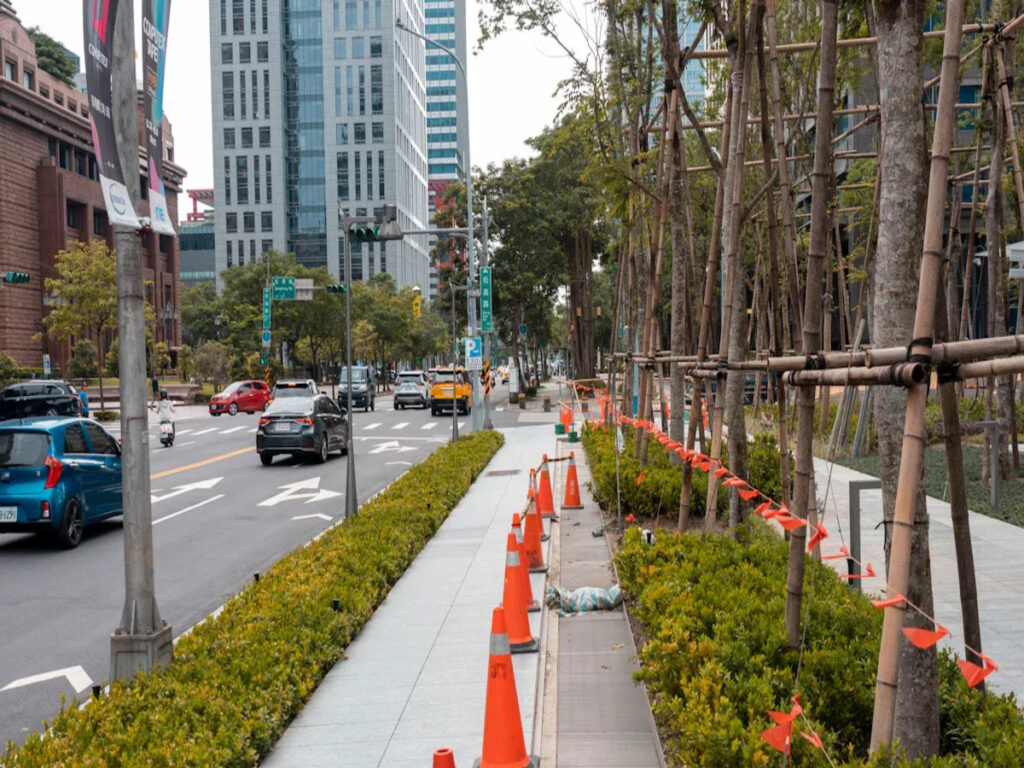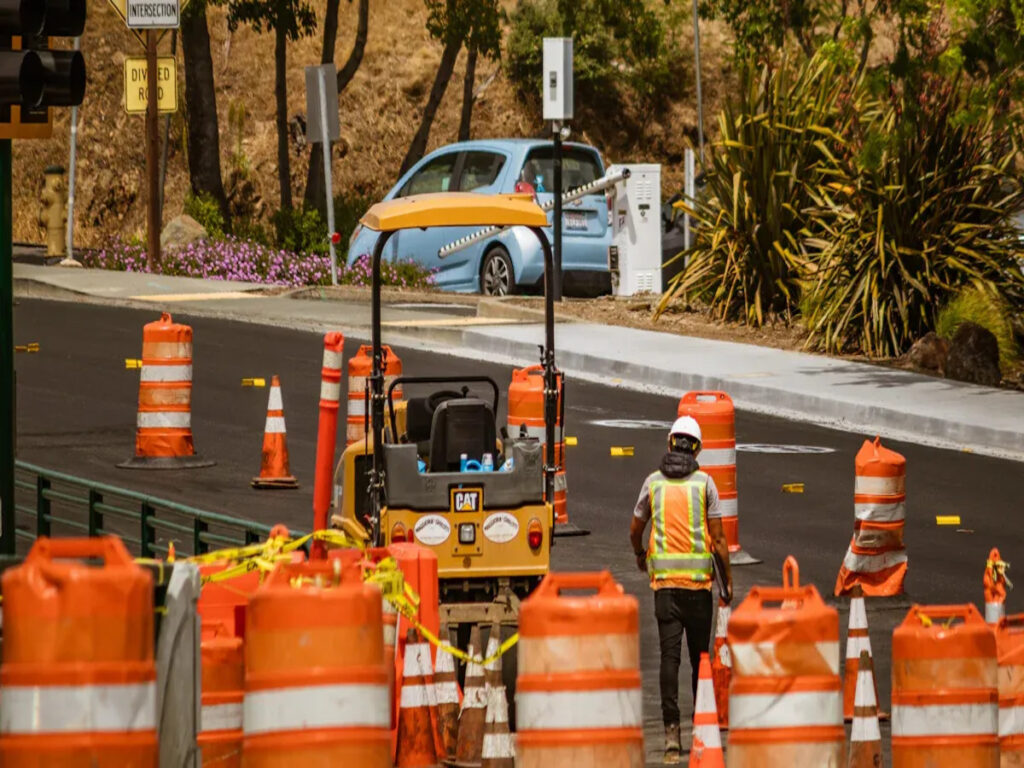
Urban areas must balance safety and movement for people and cars. Pedestrian railings help guide people walking on foot. Traffic bollards stop cars from entering dangerous areas. Both aim to prevent accidents and keep people safe. Studies show bollards greatly reduce injuries in cities. But using both raises design questions. Do they fit well together or cause problems in cities?
OPTRAFFIC provides both pedestrian railings E traffic bollards, offering integrated solutions that support safe, efficient urban design. With a deep understanding of how these elements interact in real-world environments, OPTRAFFIC helps city planners and contractors choose the right combination to enhance safety without disrupting pedestrian flow or traffic efficiency.
Takeaway chiave
- Pedestrian railings help people walk safely and avoid traffic. They stop jaywalking and organize walking paths in crowded places.
- Traffic bollards keep people safe by stopping cars from entering risky areas. They are important near schools and busy public spaces.
- Using railings and bollards together makes cities safer. Railings guide walkers, and bollards block cars to protect people.
- Barriers need good designs to work well. Planners should make them safe and nice-looking for everyone.
- Local opinions matter in city planning. Talking to residents helps create barriers that are safe and easy to use.
Understanding Pedestrian Railings

Definizione e scopo
Pedestrian railings are barriers that guide people walking. They create safe paths and keep pedestrians away from cars. These railings stop jaywalking by leading people to crosswalks. Nelle città, they help organize walking areas and prevent accidents. Their main goal is to protect walkers and keep traffic moving smoothly.
Common Locations and Applications
You’ll find pedestrian railings in places with lots of walkers. Schools use them to keep kids safe near streets. Bus and train stops use them to keep people out of traffic. Busy intersections have railings to guide people to crosswalks. Cities place them near malls, parchi, and crowded areas. They help people stay safe and move through busy spaces.
Advantages and Limitations
Pedestrian railings have many benefits. They keep walkers safe from cars and reduce confusion. They also prevent accidents at busy streets and crossings. But they have downsides too. Bad placement can make areas feel crowded. A volte, they block access for people with disabilities. Still, when used wisely, railings make cities safer and more organized.
Understanding Traffic Bollards
What Are Traffic Bollards?
Traffic bollards are strong posts used to control movement. They are often made of steel, concrete, or aluminum. Their main job is to keep people and cars safe. Bollards mark walking areas and stop cars from entering unsafe zones. Some bollards can be moved or lowered during emergencies.
Types and Materials
There are different kinds of bollards for different uses. Fixed bollards stay in place and protect high-security areas. Retractable bollards can be lowered for temporary car access. Decorative bollards look nice while keeping spaces safe.
Bollards are made from various materials. Iron bollards look good but need regular care. Steel bollards last long but cost more to maintain. Concrete bollards are strong but expensive to replace. Polymer bollards bend easily and need less upkeep, Risparmio nel tempo.
Where Are Bollards Used?
Bollards are common in cities. They protect stores from car crashes and separate bike lanes from traffic. Pedestrian plazas use bollards to block cars but keep the space open. Events like parades use portable bollards to keep people safe without blocking movement. Per esempio, the Rose Parade used mobile bollards to protect visitors while keeping the event accessible. Austin also used portable barriers to improve safety during big events.
Differences Between Guardrails and Bollards
Who Uses Them and Their Main Jobs
Pedestrian railings and traffic bollards have different users and jobs. Railings are for guiding people walking. They make safe paths and stop jaywalking. You often see them near schools, bus stops, e strade trafficate. Their main job is to keep walkers safe from cars.
Bollards are made to control cars. They block cars from entering places they shouldn’t. Bollards also protect buildings and public spaces from car crashes. Per esempio, you’ll find them in plazas, near stores, and in bike lanes. Railings help people, but bollards focus on car safety.
How They Look and Work
The way these barriers look shows their purpose. Pedestrian railings are tall and long to guide walkers. They need to be strong and easy to see in busy areas. But bad designs can make places look messy or hard to access.
Bollards come in many styles. Some stay in one spot, while others can move. Decorative bollards look nice and keep spaces safe. Their spacing and strength are important to stop cars but still let people walk through. Compared to jersey barriers, bollards are smaller and look better. Jersey barriers are big and focus on safety, making them good for highways.
How They Are Used in Cities
Both railings and bollards are important in cities, but they are used differently. Railings work best where lots of people walk, like near schools or train stations. They guide walkers and help prevent accidents. Bollards are better for stopping cars from entering certain areas. They protect stores, plazas, and bike lanes.
Here’s a table to explain their uses:
| Tipo di barriera | What It’s Good For |
|---|---|
| Basta | Protecting buildings and people from cars, especially in nice-looking places like plazas and stores. |
| Barriere della maglia | Stopping cars during crashes and keeping lanes safe, great for highways and work zones. |
| Durabilità | Strong concrete barriers handle crashes well, useful in many city areas. |
This table shows how bollards and jersey barriers are different. Bollards mix safety with good looks, while jersey barriers focus on being strong and safe. Knowing these differences helps pick the right barrier for each place.
Importance of Barriers in Traffic Safety

Keeping Pedestrians Safe
Barriers like railings and bollards help keep people safe. You often see them in busy places like schools, intersections, and cities. These barriers guide people to stay on safe paths, away from cars. Per esempio, railings near crosswalks stop jaywalking. Bollards block cars from entering areas meant for walking. This separation lowers accident risks and keeps everyone safer.
Barriers also help manage crowds and foot traffic. They guide people to prevent overcrowding and keep movement smooth. This is very useful in places like train stations or event spaces where many people gather.
Stopping Cars from Entering
Bollards are strong posts that stop cars from entering places. They are used in secure areas like airports, edifici governativi, and public squares. Bollards block cars that shouldn’t be there and protect people. Nelle emergenze, they stop cars from causing harm, like during attacks.
Some bollards can move to let emergency vehicles pass. Others stay in place to protect stores and plazas. Their strength makes them important for keeping cities safe.
Making Barriers Safe and Accessible
Designing barriers that are safe and easy to use is tricky. Safety is important, but barriers must also work for everyone, including people with disabilities. Badly placed barriers can block wheelchairs or make access hard. Planning with the community helps make barriers safe and usable for all.
Good design is key. Per esempio:
- Barriers should follow accessibility rules and be easy to use.
- Planners must balance safety with access for everyone.
- Some areas may limit access to protect their natural state.
By focusing on inclusive design, barriers can be safe and welcoming. Da questa parte, they protect people without leaving anyone out.
Complementary Use of Railings and Bollards
School Entrances and Child Safety
At school entrances, railings and bollards work together for safety. Railings guide kids to crosswalks, stopping jaywalking. Bollards block cars from entering walking areas, keeping kids safe. This setup improves safety and organizes traffic during busy times.
Studies show these barriers lower injuries near schools. Per esempio, data shows fewer injuries after adding safety features like bollards:
| Intervention Type | Pre-Intervention Injuries (per 100 person-years) | Post-Intervention Injuries (per 100 person-years) |
|---|---|---|
| General Enhancements (including bollards) | 0.38 | -0.36 |
This proves that using railings and bollards makes school zones safer for children.
Urban Squares and Public Spaces
Urban squares benefit from railings and bollards working together. Railings mark paths for walkers, while bollards stop cars. Insieme, they balance safety and open space. Railings protect busy edges, and decorative bollards keep spaces inviting.
Barriers like these separate people from cars, improving safety. But poor placement can block movement for walkers. Planners must position barriers carefully to avoid problems. Da questa parte, public spaces stay safe and easy to use.
Transport Hubs and Mixed Traffic Areas
Transport hubs like train stations mix cars and walkers. Railings and bollards keep these areas safe and organized. Railings guide people to entrances and exits, avoiding crowding. Bollards block cars but allow emergency vehicles when needed.
In bus terminals, bollards protect walkers without blocking views. Per esempio, bollards at drop-off spots keep cars away but don’t clutter the area. This smart use of barriers improves safety and keeps traffic flowing smoothly.
Potential Conflicts in Design
Overcrowding and Pedestrian Bottlenecks
Barriers like railings and bollards can cause crowding in busy spots. Too many barriers take up walking space, making paths smaller. This can create bottlenecks during rush hours or big events. Per esempio, train stations or event venues often face this issue. Badly placed barriers slow people down and make moving stressful.
Studies show that barriers affect how people feel in crowded places. Researchers used devices to measure stress in packed areas. Results show that overcrowding from barriers raises stress and discomfort. Per sistemare questo, planners must think about where and how many barriers to use.
Aesthetic Clashes and Visual Clutter
Barriers should keep spaces safe without ruining their look. But mismatched designs can make areas look messy. Ad esempio, bright railings might not match decorative bollards nearby. This can make places like shopping areas or squares feel disorganized.
Urban planners should pick materials and colors that fit the area. Matching designs can make barriers both useful and nice to look at. Da questa parte, barriers improve safety while keeping spaces attractive.
Misuse and Accessibility Concerns
Barriers need to be safe and easy for everyone to use. Poorly placed railings or bollards can block paths for people with disabilities. Per esempio, narrow gaps might make it hard for wheelchairs to pass. Instead of helping, these barriers can become problems.
Planners should follow rules to make barriers accessible for all. Barriers should allow smooth movement while keeping people safe. Talking to the community can help find problems early and create better designs.
Design Tips for City Planners
Matching Materials and Colors
When planning city spaces, match materials and colors wisely. Using similar materials and matching colors makes areas look neat. This not only looks good but also helps people move safely. Per esempio:
- Bright colors make paths and barriers easy to spot.
- Natural colors like brown or green create a calm feeling.
- Matching designs make spaces feel tidy and safe.
Picking materials and colors that suit the area makes spaces useful and nice to see.
Following Where People Walk Naturally
To design better cities, watch where people like to walk. These natural paths show the easiest ways for people to move. Studies show many streets don’t match these paths. By studying how people walk, planners can make better routes.
Placing railings and bollards along these paths helps guide walkers. This stops jaywalking and keeps people moving smoothly. Smart placement of barriers makes walking safer and easier.
Using Smart Bollards for Changing Needs
Smart bollards are a new way to manage city spaces. These bollards can move or change based on what’s needed. Per esempio, they can block cars during events but let emergency vehicles through. This makes spaces safe without blocking access.
Some smart bollards have sensors to track traffic and walkers. This data helps planners decide where to put barriers. Adding technology makes cities safer and easier to navigate.
Engaging Community Input for Better Design
Including the community in city planning leads to better ideas. People who use these spaces daily can share helpful feedback. Their input makes designs more useful, fair, and liked by everyone.
Start by holding public meetings or workshops. These events let people talk about barriers like railings and bollards. Ask them about safety, ease of use, and how things look. Per esempio, parents might want bollards near playgrounds to block cars. Commuters could suggest railings to improve walking paths.
Surveys are another great way to gather opinions. Online or paper surveys can reach more people. Use simple questions about how barriers affect their daily routines. Show pictures of your ideas to make it easier to understand. This helps you hear from many voices, even those who skip meetings.
Mancia: Use social media to connect with younger people. Post polls or design ideas to start conversations and get feedback.
Working with local groups also improves your plans. Schools, imprese, and advocacy groups offer unique ideas. Per esempio, disability advocates can ensure barriers are easy for everyone to use. Store owners might prefer decorative bollards to make shopping areas look nice.
Finalmente, test your designs in real life. Temporary setups show how people use barriers. Watch their behavior and adjust as needed. This step-by-step process makes sure your designs work well for all.
By listening to the community, you create spaces that are safe, useful, and attractive. Their ideas help you avoid mistakes and build trust in your plans.
Pedestrian railings and traffic bollards have different jobs in cities. Railings help people walk safely on set paths. Bollards stop cars from entering places they shouldn’t and add safety. When used together wisely, they make areas safer and manage traffic better. Using smart designs based on data improves safety and access for all. Good city planning makes these tools work well together, keeping cities safe and organized for everyone.
Domande frequenti
What do pedestrian railings do?
Pedestrian railings help people walk safely in crowded places. They guide walkers and stop jaywalking. You often see them near schools, bus stops, and intersections. Their main job is to keep people safe from cars.
How do traffic bollards make cities better?
Traffic bollards stop cars from going into certain areas. They protect bike lanes, sidewalks, and buildings. Some bollards look nice while keeping spaces safe. Retractable bollards can move to allow cars during emergencies.
Can railings and bollards work well together?
SÌ, railings and bollards work great as a team. Railings guide walkers, and bollards block cars. Insieme, they make places like schools and parks safer for everyone.
What are smart bollards, and why are they useful?
Smart bollards can change to fit different needs. They can move or lower to let emergency vehicles pass. Some have sensors to track traffic and help city planners improve safety.
How can barriers cause problems for accessibility?
Badly placed barriers can block wheelchairs or strollers. Barriers should follow rules to stay accessible for everyone. Talking to the community helps find and fix these problems early.



















